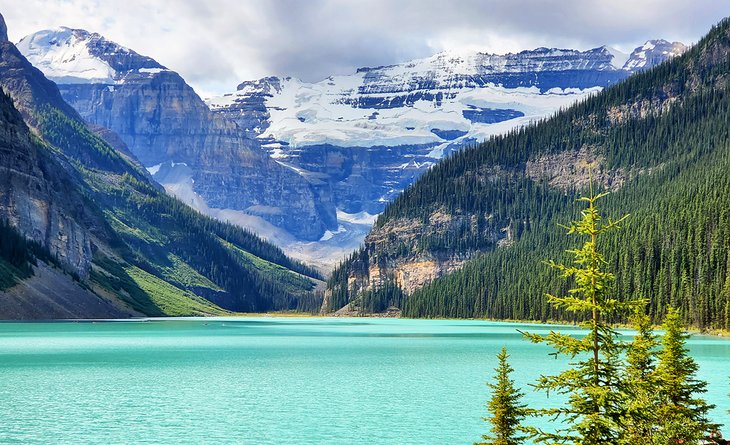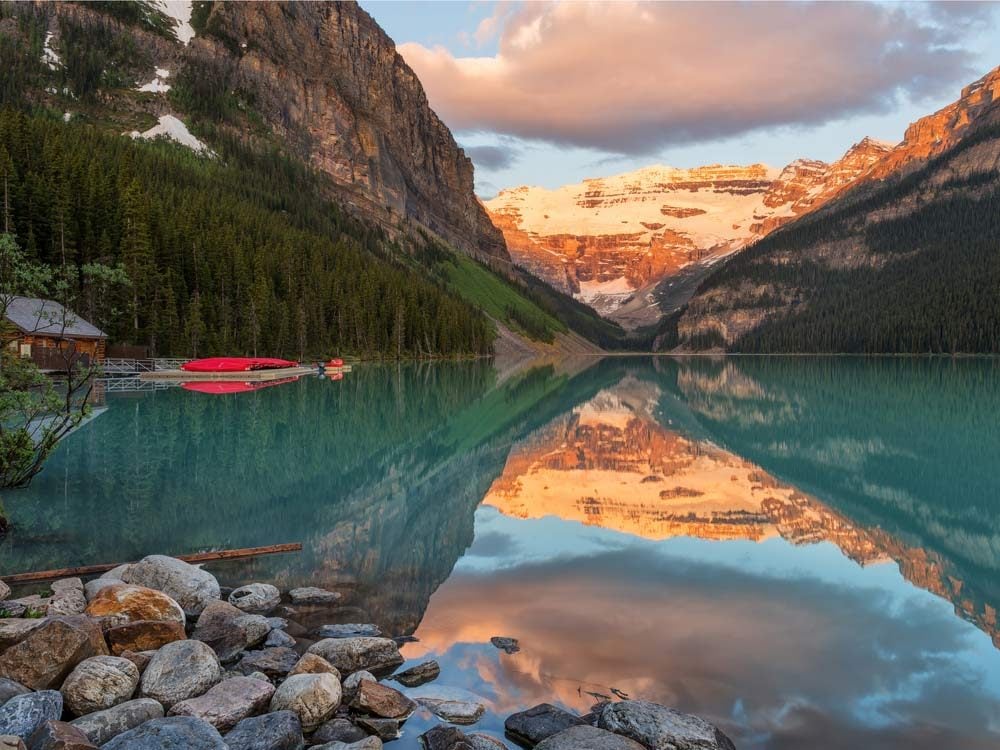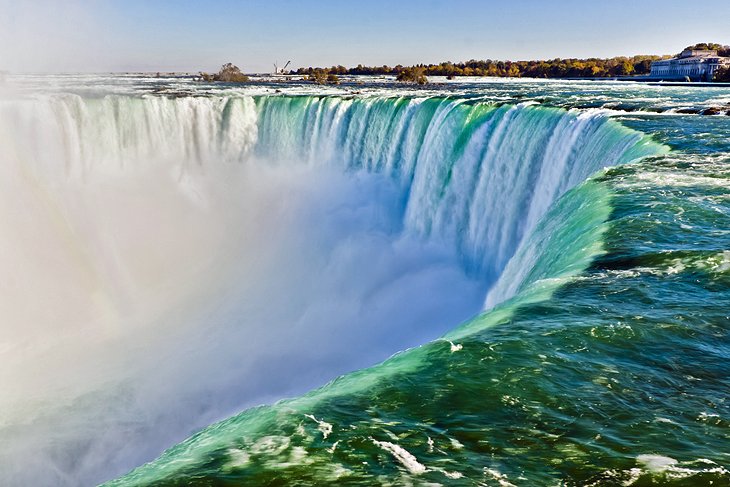
Canada, the world’s second-largest country by land area, is a land of unparalleled natural beauty, vibrant multicultural cities, and a rich, complex history. From the towering peaks of the Rocky Mountains to the rugged coastlines of the Atlantic, and from the bustling urban centers of Toronto and Vancouver to the charming, historic streets of Quebec City, Canada offers an astonishing diversity of experiences for every type of traveler. This vast nation beckons with adventure, tranquility, cultural immersion, and a welcoming spirit that leaves an indelible mark on all who visit.
Embark on a journey through Canada’s top attractions, delve into its fascinating past, and arm yourself with essential travel tips to ensure your Canadian adventure is as seamless as it is unforgettable.
I. Canada’s Top Attractions: A Journey Through Diversity

Related Articles about Canada: A Land of Breathtaking Wonders and Unforgettable Experiences:
- Lima: A Culinary and Cultural Kaleidoscope – Your Ultimate Travel Guide
- Where Ancient Sands Meet Modern Marvels: Discovering Israel’s Finest Hotels and Unforgettable Experiences
- Kazakhstan: A Traveler’s Guide to the Land of Steppe and Sky
- Abu Dhabi: A Symphony of Tradition and Tomorrow
- Florence: A Traveler’s Guide to the Jewel of the Renaissance
Canada’s sheer size means its attractions are spread far and wide, each offering a unique glimpse into the country’s diverse character.
The Majestic Canadian Rockies (Alberta & British Columbia):
Undoubtedly one of Canada’s most iconic and breathtaking regions, the Canadian Rockies are a UNESCO World Heritage Site renowned for their dramatic peaks, turquoise lakes, ancient glaciers, and abundant wildlife.
- Banff National Park (Alberta): Canada’s first national park, Banff is a playground for nature lovers. Lake Louise, with its emerald waters set against the Victoria Glacier, and Moraine Lake, famous for its vibrant blue hue, are postcard-perfect vistas. Visitors can hike countless trails, canoe on the lakes, soak in the Upper Hot Springs, or ride the Banff Gondola for panoramic views. The charming town of Banff offers a range of accommodations, dining, and shops.
- Jasper National Park (Alberta): North of Banff, Jasper is the largest national park in the Canadian Rockies. It offers a more rugged, less commercialized experience. Highlights include the stunning Maligne Lake and its Spirit Island, the impressive Athabasca Glacier (part of the Columbia Icefield, accessible via Ice Explorer tours), and incredible opportunities for stargazing as a Dark Sky Preserve.
- Whistler Blackcomb (British Columbia): A world-renowned resort village, Whistler is famous for its exceptional skiing and snowboarding in winter, and a hub for mountain biking, hiking, and ziplining in summer. The Peak 2 Peak Gondola connects Whistler and Blackcomb mountains, offering spectacular views year-round.
Niagara Falls (Ontario):

One of the world’s most famous natural wonders, Niagara Falls is a powerful spectacle of cascading water on the border between Canada and the United States. The Canadian Horseshoe Falls are particularly impressive, with millions of liters of water plunging over the edge every minute. Visitors can experience the falls up close on a Hornblower Niagara Cruises boat tour, journey behind the falls, or enjoy panoramic views from the Skylon Tower. The surrounding Clifton Hill area offers family-friendly entertainment, while the nearby Niagara-on-the-Lake boasts charming vineyards and historic architecture.
Vibrant Urban Landscapes:
Canada’s cities are melting pots of culture, history, and modernity, each with its own distinct personality.
- Toronto (Ontario): Canada’s largest city and a global hub for finance, arts, and culture. The iconic CN Tower dominates the skyline, offering dizzying views from its observation decks. Explore diverse neighborhoods like the bohemian Kensington Market, the historic Distillery District, or the trendy Queen West. World-class museums such as the Royal Ontario Museum (ROM) and the Art Gallery of Ontario (AGO) offer cultural enrichment. Toronto’s culinary scene is incredibly diverse, reflecting its multicultural population.
- Montreal (Quebec): A vibrant city that blends European charm with North American dynamism. Old Montreal is a historic district with cobblestone streets, horse-drawn carriages, and stunning architecture, including the magnificent Notre-Dame Basilica. Explore the bustling markets, enjoy the city’s renowned culinary scene, or immerse yourself in its thriving arts and festival culture, especially in the Plateau Mont-Royal neighborhood. The city truly comes alive in summer with numerous festivals.
- Quebec City (Quebec): The only fortified city in North America north of Mexico, Old Quebec is a UNESCO World Heritage Site that transports visitors to another era. Dominated by the iconic Fairmont Le Château Frontenac, the city’s historic walls, narrow streets, and charming architecture evoke a strong European feel. Explore the Plains of Abraham, Dufferin Terrace, and browse the artisan shops. Its distinct French culture, language, and cuisine make it a truly unique Canadian experience.
- Vancouver (British Columbia): Nestled between the Pacific Ocean and the Coast Mountains, Vancouver is consistently ranked as one of the world’s most livable cities. Its natural beauty is easily accessible, with Stanley Park offering vast green spaces, seawall walks, and totem poles just minutes from downtown. Explore the historic gas lamps of Gastown, the vibrant public market on Granville Island, or enjoy the city’s thriving culinary scene, particularly its Asian fusion cuisine. Vancouver is also a gateway to outdoor adventures, from skiing at nearby resorts to kayaking in the Burrard Inlet.
Coastal Charms and Atlantic Grandeur:
Canada’s Atlantic provinces offer a rugged beauty, rich maritime history, and a slower pace of life.
- Bay of Fundy (New Brunswick & Nova Scotia): Home to the highest tides in the world, the Bay of Fundy is a natural marvel. At Hopewell Rocks in New Brunswick, visitors can walk on the ocean floor at low tide and kayak among the "flowerpot rocks" at high tide. The dramatic tidal shifts create a unique ecosystem and stunning geological formations.
- Prince Edward Island (PEI): Canada’s smallest province is a charming island known for its red sand beaches, rolling green hills, and the literary inspiration for "Anne of Green Gables." Visit Green Gables Heritage Place in Cavendish, cycle along scenic coastal routes, and indulge in fresh seafood, especially its famous mussels and lobster.
- Gros Morne National Park (Newfoundland & Labrador): A UNESCO World Heritage Site on the west coast of Newfoundland, Gros Morne is a geological wonder. Its dramatic fjords, barren tablelands (evidence of ancient tectonic plate collision), and pristine wilderness offer incredible hiking, boat tours through Western Brook Pond, and wildlife viewing. It’s a truly wild and captivating corner of Canada.
The Wild North and Unique Experiences:
For those seeking true wilderness and extraordinary natural phenomena, Canada’s northern territories deliver.
- Yukon & Northwest Territories: These vast, sparsely populated regions offer unparalleled opportunities for wilderness adventures. In winter, they are prime locations for witnessing the mesmerizing Northern Lights (Aurora Borealis). Summer brings endless daylight, ideal for hiking, canoeing, and exploring historic gold rush towns like Dawson City in the Yukon.
- Churchill, Manitoba: Known as the "Polar Bear Capital of the World," Churchill offers unique wildlife viewing opportunities, particularly in autumn when polar bears gather on the shores of Hudson Bay. Beluga whale watching in summer is also a major draw.
II. A Glimpse into Canada’s Rich History
Canada’s history is a tapestry woven from millennia of Indigenous habitation, centuries of European colonization, and a modern narrative of multiculturalism and nation-building.
Long before European arrival, Indigenous peoples – First Nations, Inuit, and Métis – thrived across the land, developing diverse cultures, languages, and complex societies. Their rich heritage is evident in archaeological sites, traditional art, and vibrant contemporary communities across the country.
The arrival of European explorers in the 15th and 16th centuries marked a significant turning point. French colonists established New France in the St. Lawrence Valley, founding cities like Quebec City and Montreal, while British interests grew along the Atlantic coast. The struggle for control between France and Britain culminated in the Battle of the Plains of Abraham in 1759, leading to British supremacy.
The 19th century saw the formation of British North America, and in 1867, the Canadian Confederation united four provinces (Ontario, Quebec, Nova Scotia, and New Brunswick) into a self-governing dominion. This laid the groundwork for the modern nation, which gradually expanded westward to the Pacific.
The 20th century brought two World Wars, economic growth, and waves of immigration from around the globe, shaping Canada into the multicultural society it is today. This history is reflected in Canada’s dual official languages (English and French), its diverse architecture, the vibrant cultural institutions in its cities, and the ongoing efforts towards reconciliation with Indigenous peoples. Understanding this layered past enriches any visit, offering context to the country’s landscapes, cities, and national identity.
III. Essential Travel Tips for an Unforgettable Canadian Adventure
To make the most of your Canadian journey, keep these practical tips in mind:
- Visas & Entry: Most visitors require an Electronic Travel Authorization (eTA) if flying into Canada or a visa, depending on your nationality. Check official Canadian government websites well in advance of your trip.
- Currency: The official currency is the Canadian Dollar (CAD). Credit cards are widely accepted, but it’s good to carry some cash for smaller purchases or remote areas.
- Language: Canada has two official languages: English and French. English is dominant in most provinces, while French is prevalent in Quebec and parts of New Brunswick. Road signs in some areas, especially Quebec, will be bilingual.
- Tipping: Tipping is customary in Canada. Expect to tip 15-20% for good service in restaurants, bars, and for taxi drivers. Hotel staff (porters, housekeepers) also appreciate tips.
- Packing: Canada’s weather can be highly variable, especially if you’re traveling across different regions or seasons. Layering is key. Even in summer, evenings can be cool. Pack for rain, especially on the coasts, and sturdy walking shoes are a must.
- Safety: Canada is generally a very safe country. However, exercise common sense, be aware of your surroundings, and secure your valuables, especially in crowded urban areas. When exploring wilderness areas, inform someone of your itinerary and be prepared for changing conditions.
- Connectivity: Consider purchasing a local SIM card or an eSIM for your phone upon arrival for easy navigation and communication. Wi-Fi is widely available in hotels, cafes, and public spaces.
- Respect: Show respect for Canada’s Indigenous cultures, its pristine natural environments, and local customs. "Leave no trace" principles are important in parks and wilderness areas.
IV. Accommodation Options: Your Home Away From Home
Canada offers a wide array of accommodation choices to suit every budget and travel style:
- Hotels: From luxurious five-star establishments in major cities to budget-friendly chains, hotels are plentiful. Boutique hotels offer unique charm, particularly in historic districts.
- Bed & Breakfasts (B&Bs) / Guesthouses: These offer a more intimate and personalized experience, often in charming homes, particularly popular in smaller towns and scenic regions.
- Vacation Rentals: Platforms like Airbnb and VRBO provide options for apartments, cabins, and houses, ideal for families or longer stays, offering amenities like kitchens.
- Hostels: A budget-friendly option, particularly popular with solo travelers and backpackers, offering both dormitory-style and private rooms in major cities and popular tourist areas.
- Camping & RV Parks: For nature lovers, Canada’s national and provincial parks offer extensive camping facilities, from primitive backcountry sites to full-service RV hookups. Reservations, especially in popular parks like Banff, are essential and often need to be made months in advance.
- Unique Stays: Wilderness lodges, glamping sites, and remote cabins offer immersive experiences for those looking to truly connect with Canada’s natural beauty.
V. Navigating Canada: Transportation Guide
Getting around Canada depends largely on the distances you plan to cover and the regions you wish to explore.
- Air Travel: Given Canada’s vastness, domestic flights are often the most practical way to cover long distances between major cities. Air Canada and WestJet are the primary carriers, with several smaller regional airlines.
- Trains: Via Rail Canada offers scenic train journeys, most notably "The Canadian," which traverses the country from Toronto to Vancouver, offering a comfortable and picturesque way to see the landscape. Shorter routes, like those between Quebec City and Windsor, are also available.
- Buses: Inter-city bus services, such as Rider Express and Megabus (in Ontario and Quebec), connect many cities and towns, offering a more economical travel option, though journeys can be long.
- Rental Cars: For ultimate flexibility, especially when exploring national parks, rural areas, or coastal routes, renting a car is highly recommended. Major car rental companies operate at all airports and in most cities. Be prepared for long driving distances and varying road conditions, especially in winter.
- City Public Transit: Major cities like Toronto, Montreal, and Vancouver boast efficient public transit systems (subways, buses, streetcars) that make getting around without a car easy and convenient.
- Ferries: Ferries are an essential mode of transport in coastal regions. BC Ferries connects Vancouver Island to the mainland and other Gulf Islands, while Marine Atlantic provides service to Newfoundland and Labrador from Nova Scotia.
VI. Best Time to Visit: Timing Your Canadian Experience
The "best" time to visit Canada largely depends on your desired activities and the regions you plan to explore.
- Summer (June-August): This is Canada’s peak tourist season. The weather is warm and sunny across most of the country, ideal for outdoor activities like hiking, camping, cycling, and water sports. Cities come alive with festivals, and national parks are fully accessible. However, expect larger crowds and higher prices for flights and accommodations.
- Fall (September-October): A magical time to visit, especially for witnessing the spectacular fall foliage in Eastern Canada (Ontario, Quebec, Atlantic Provinces). Temperatures are pleasant, crowds are thinner than in summer, and it’s an excellent time for hiking and scenic drives. Western Canada also offers beautiful autumn colours and crisp air.
- Winter (November-March): For winter sports enthusiasts, this is the prime season for skiing and snowboarding in the Rockies and other mountain ranges. The North offers incredible opportunities to see the Northern Lights. Cities sparkle with festive markets and lights, and unique winter activities like ice skating on the Rideau Canal in Ottawa are popular. Be prepared for cold temperatures and snow.
- Spring (April-May): A shoulder season offering fewer crowds and often lower prices. The thaw brings blossoming flowers (cherry blossoms in Vancouver) and awakening wildlife. Weather can be variable, ranging from mild and sunny to chilly and rainy, but it’s a great time for city exploration and early-season hiking.
Conclusion
Canada is a destination that promises adventure, tranquility, cultural richness, and memories to last a lifetime. From the awe-inspiring natural wonders of its national parks to the sophisticated charm of its cities and the profound depth of its history, this vast nation offers an unparalleled array of experiences. By understanding its top attractions, historical context, and practical travel considerations, you are well-equipped to embark on an unforgettable journey through the true north, strong and free.





